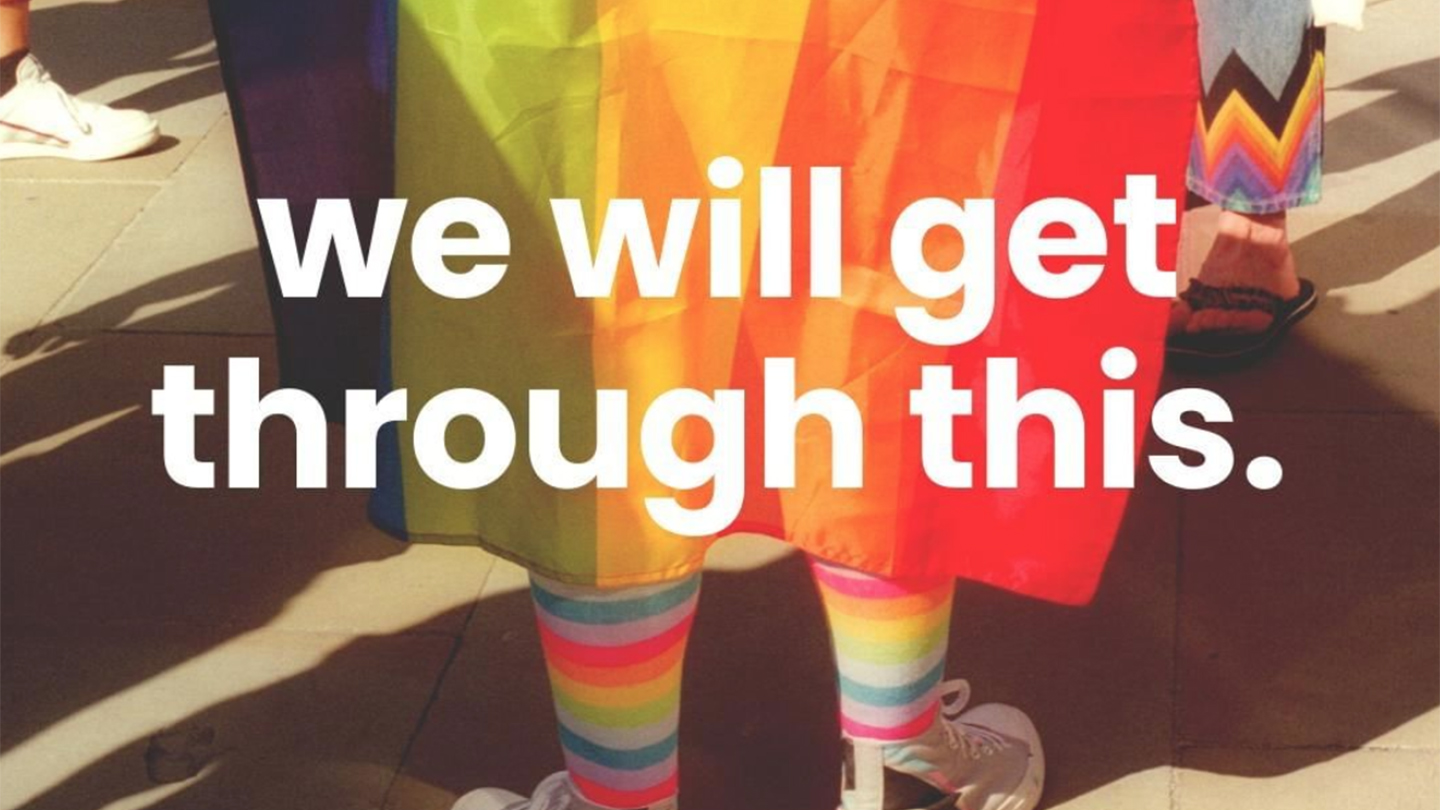How to survive a Covid-19 lockdown — tips for queer and trans people
Colin Stewart is a 45-year journalism veteran living in Southern…
Self-care is a challenge for queer and trans people enduring a Covid-19 lockdown. Here are some survival tips.

The LGBTQ advocacy group Orinam, based in India, compiled the following recommendations for queer and trans people seeking advice about surviving the lockdown.
Orinam acknowledged that many of the following suggestions aren’t practical for LGBTQ people in particularly challenging situations. It noted: “We are also keenly aware that many of these points are of limited use to persons whose very survival and livelihood are under threat, and whose mental health is already severely affected due to multiple marginalisations (caste, class, disability, for example) that pre-date and will outlast the lockdown. We welcome suggestions and critiques to help make this more accessible and useful.”

Locked Down in the Time of COVID-19
Safety and Self-Care for Queer and Trans Persons

The lockdown induced by COVID-19 has caused many of us to be stuck in abusive households with our natal families, or feel otherwise isolated. We have compiled some tips for safety and self care during these difficult times. These are not intended to be exhaustive.
- We may feel even more isolated and vulnerable now than before the lockdown. Being in close contact with our friends and support systems, if at all possible, can help us.
- In case there are other (less hostile) family members in the area we can explore the option of going and staying with them.
- Some of us may be at home and have no option to leave. In that case it may be good to try and avoid escalation of issues, such as those around gender/sexuality or marriage.
If topics of marriage do come up, we can reassure ourselves that the lockdown will prevent parents from taking us to meet potential partners or inviting prospective grooms or brides at this point in time. - In case of risk of physical threats, we should try to stay as close to the exit door and far away from objects that can be used to assault/harm as possible.
- If we have a smartphone, we can send our location to people we rely on, via WhatsApp™ or other means. It will help others to reach us in case of emergency.
- It’s a good idea to keep some cash and our important official documents handy with us (examples include Aadhaar, PAN, Voter identity card, passport, copy of ration card, Trans Welfare Board identity card, workplace-issued ID, bank passbook, academic certificates, etc.).
- For those of us who experience gender dysphoria, this can be particularly severe if family members force us to dress in ways conforming to assigned gender. Avoiding looking in the mirror may help a little in reducing our distress. If we have photos of ourselves in our gender presentation and preferred clothing, we may consider looking at these. It also helps to have a presence on online platforms where we can be ourselves, such as Second Life and peer WhatsApp groups. More options for gender dysphoria- related support and interventions will become available after the lockdown.

SELF-CARE TECHNIQUES
This section is based on our experiences as community members, peer counselors and/or therapists.
Anxiety and fear during the pandemic can be accompanied by restlessness, agitation and reactiveness, all of which may be temporary or may add to more long-term anxieties. In times of crisis it is immensely important to be aware of our energies, notice our restlessness, anxiety, fear, etc.
These feelings and emotions are valid and yet, are quite likely to be difficult to deal with. They will come and go multiple times a day. To manage these, so that we experience their full range but prevent ourselves from reacting, here are some suggestions:
DURING A DIFFICULT INTERACTION
- If we are able to convey to the person(s) around us that we need to step away, it will give us an opportunity to go to a safe place (bedroom, veranda, bathroom, terrace).
- If stepping away is not an option, we can try to ground ourselves [for e.g. by holding on to an object or squeezing a piece of clay] and focus on processing and responding carefully, rather than reacting spontaneously in a way that we may regret later.
- If we do end up reacting impulsively, it is important to remind ourselves that we are going through hard times, and to be easy on ourselves. When we find ourselves back in a safe space, that may be a good time to introspect and figure out how to proceed in future.
- We need to find ways to remind ourselves that the lockdown is a temporary situation, such as marking the duration of the lockdown on a calendar.
- Distracting ourselves with other tasks or activities can help. However, we need to remember that shelving the difficult emotions may cause them to return later at unexpected times. The subsequent sections “Returning to a place of calmness” and “General practices for emotional well-being” outline some ways to express our emotions so they don’t pile up.
RETURNING TO A PLACE OF CALMNESS
Once we are able to step away from the interaction that was stress-inducing, here are some ways in which we can return to a state of calmness. Each of us can find a technique that works best for us.
- Holding on to an object, article of personal value or toy can offer us a sense of comfort and safety. Sometimes it helps to just keep some clay or atta in the hand and keep squeezing.
- Listening to our favorite music or reading a favorite author can help.
- If we have a dog or pet, petting it can be soothing.
- We can practise some form of breath work to cope with emotions – focusing on deepening and lengthening the breath: such as three seconds inhale, one second pause, three seconds exhale, trying to increase the duration of the exhalation to a few more seconds than that of the inhalation. While doing this breath work, we focus on the sensation of the breath, how they feel in the body, etc. More information and links are in the ‘Other Resources’ section of this document.

GENERAL PRACTICES FOR EMOTIONAL WELL-BEING
- Starting the day with useful activities and chores can keep our minds occupied and give us a sense of control and fulfilment. These activities could include exercise, cleaning, washing clothes, arranging rooms: anything that does not need too much thought. While engaging in these activities, it helps for us to keep our focus on the task at hand, and address any challenges that arise in a problem-solving/strategizing manner. For example, while cleaning or arranging items on shelves, we focus on where to keep what, what items can be kept together, etc.
- Productive activities such as studying, working, learning a new language or skills can also help give us a sense of accomplishment.
- Noticing sensations (sigh, smell, touch, taste, hearing) while engaging in these activities helps us remain in the present moment. When we become aware that our thoughts have gone to the future or past, worries, etc., we can bring the mind back using the sensations of the present.
- An additional benefit of these activities is that they can help us build our safe space and limit difficult and potentially hostile interactions with other people.
- It helps greatly to make breath work (as described in the previous section) a part of our daily routine.
- Physical exercise along with breath work or other kinds of meditation help us to release pent-up energy of any kind in the body. Good cardio- and weight training can be done at home even if there is very limited physical space. Many video links are available online: some are linked in the ‘Other Resources’ section below.
- Writing, sketching, painting, music, are some of the ways that help us to express our emotions.
- An example of a writing exercise is to set aside a desired time period to write continuously without taking pen off paper. While writing, if nothing comes to mind, we can just write “can’t think of anything.“
- Another example of a writing exercise would be to create stories featuring us in the way we see ourselves.
AUTHORS AND CITATION
This document emerged from discussions during a SAATHII-organised Zoom™ webinar on LGBTIQA+ crisis response held on March 21, 2020, and subsequent discussions on the LGBTQIA+ 4 Mental Health WhatsApp™ group. The author list is arranged alphabetically by last name. Our suggested citation format is:
Balasubramanian1, S., Banerjee2, S., Borah3, R., Raju2, A., Ramakrishnan4, L., and A. Sarkar4 (2020). Locked Down in the Time of Covid-19: Safety and Self-care for Queer and Trans Persons. http://orinam.net/locked-down-safety-self-care-queer-trans/
- Shyam Kamala Balasubramanian is with the Orinam collective, and based in Coimbatore
- Shilpi Banerjee and Avanish Raju are with Being Myself Clinic in Gurugram
- Rituparna Borah is with Nazariya: a Queer Feminist Resource Group, Delhi
- Amrita Sarkar and L. Ramakrishnan are with SAATHII in Delhi and Chennai, respectively
OTHER RESOURCES
Books, Articles and Manuals
- Banerjee, Shilpi and Raju, Avanish (2018). Stress Toolkit. Being Myself Clinic, Gurugram. Online at http://orinam.net/stress-toolkit/
- Great Good Science Center (undated) Mindful Breathing. University of California at Berkeley. Online at https://ggia.berkeley.edu/practice/mindful_breathing
- Kabat-Zinn, Jon (2013) Full Catastrophe Living (Revised Edition): Using the Wisdom of Your Body and Mind to Face Stress, Pain, and Illness. Bantam Books, New York. ISBN-10: 9780345536938, ISBN-13: 978-0345536938
Videos on Mindfulness
- Kabat-Zinn, Jon (2020) Mindfulness, Healing, and Wisdom in a Time of COVID-19. Online at https://www.youtube.com/watch?v=r2efOoRF_pw
- Segal, Zindel (2016) Three-Minute Breathing Space. Online at https://www.youtube.com/watch?v=amX1IuYFv8A&feature=youtu.be
- Kabat-Zinn, Jon (2011) The Healing Power of Mindfulness: talk at Dartmouth College. Online at https://www.youtube.com/watch?v=_If4a-gHg_I
Videos on Physical Fitness
- Lewis, Lita (2018) 30-Minute HIIT Cardio Workout with Warm Up – No Equipment at Home | SELF. Online at https://www.youtube.com/watch?v=ml6cT4AZdqI
- Fitness Blender (undated) Free Workout Videos. Online at https://www.fitnessblender.com/videos
Downloadable PDF versions of these recommendations are available in English, Kannada ಕನ್ನಡ and Hindi हिन्दी. Orinam hopes they will soon be available in Tamil தமிழ், Marathi मराठी] and Bengali বাংলা.




